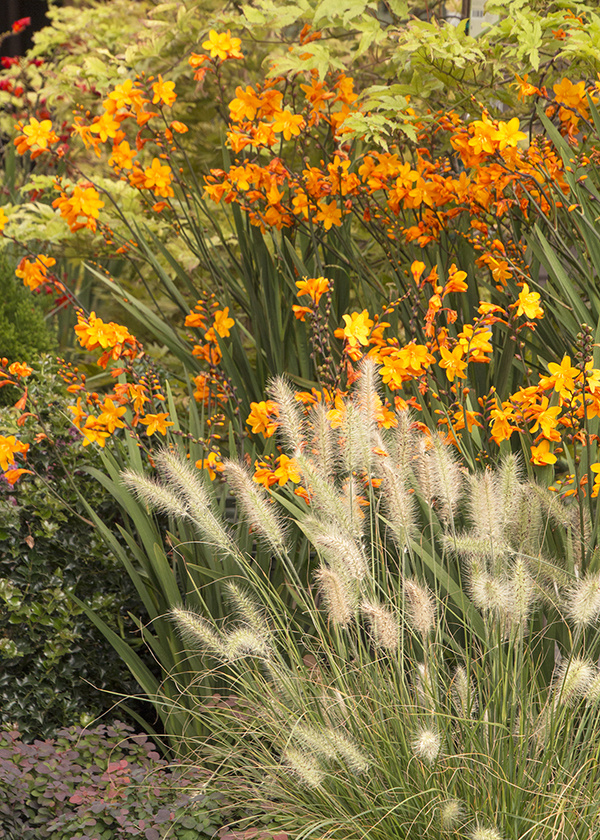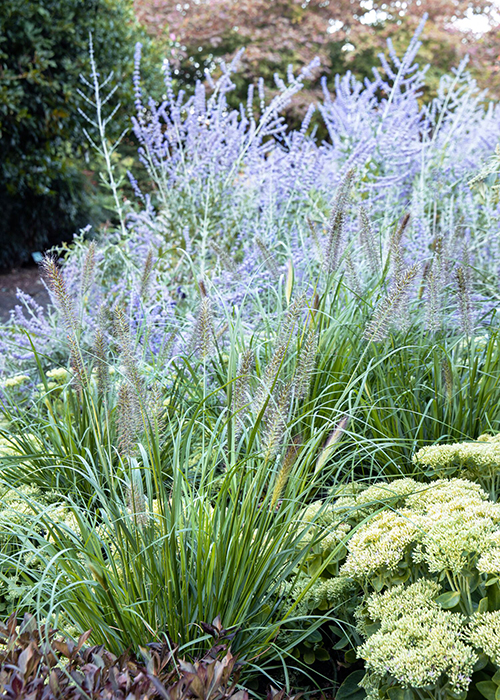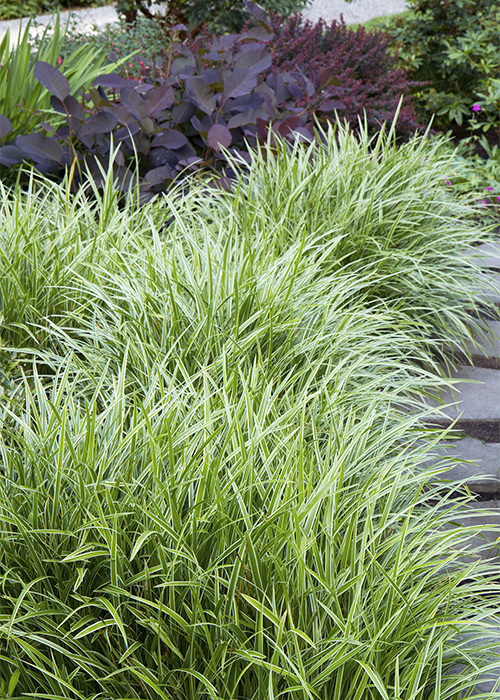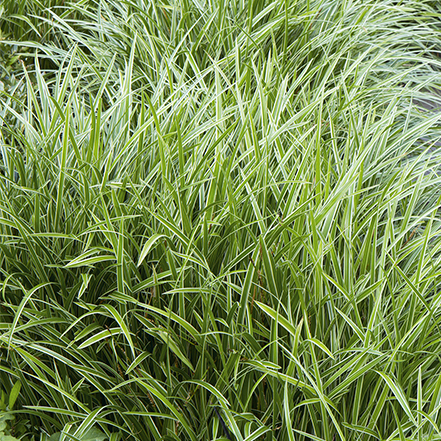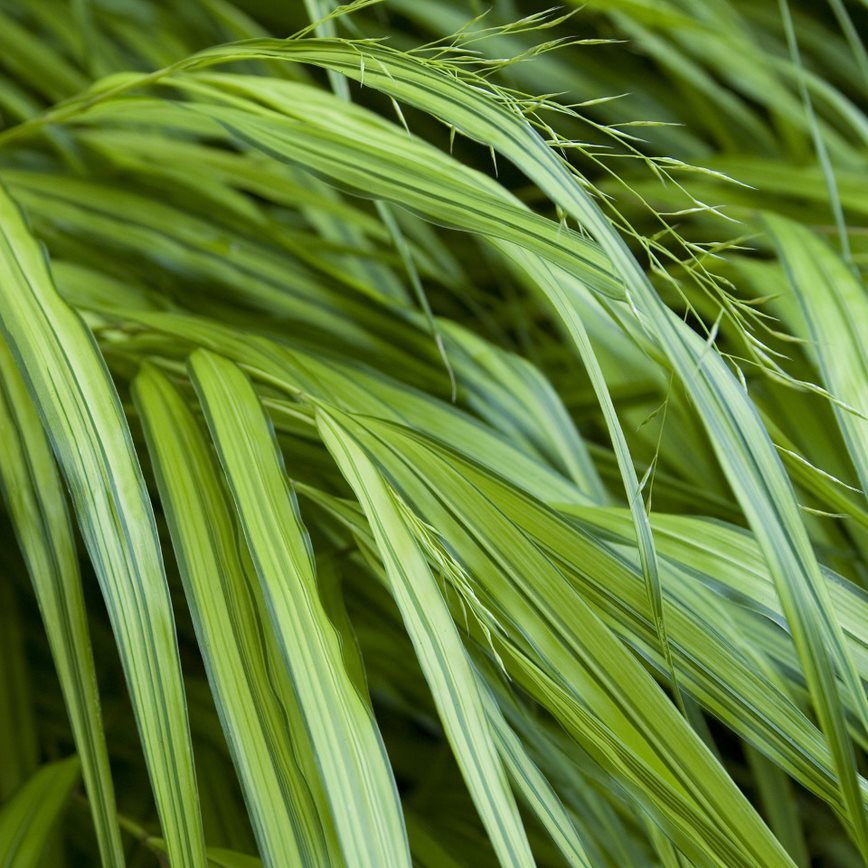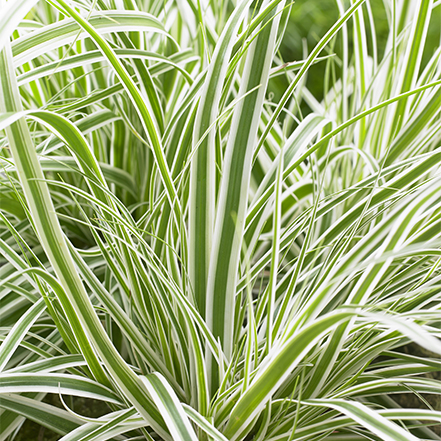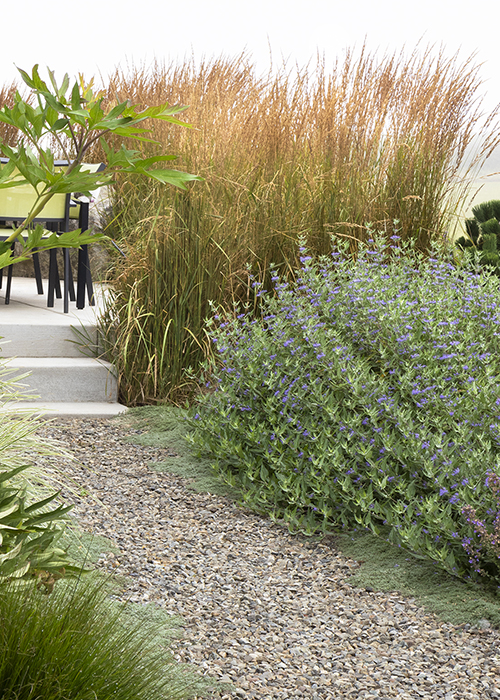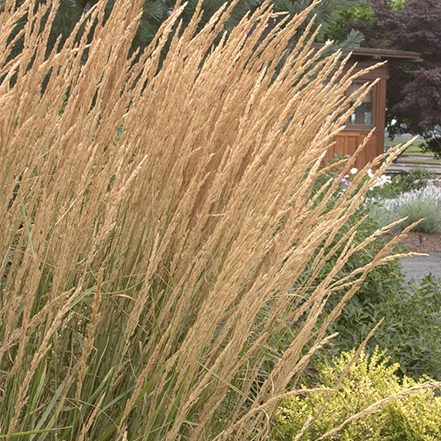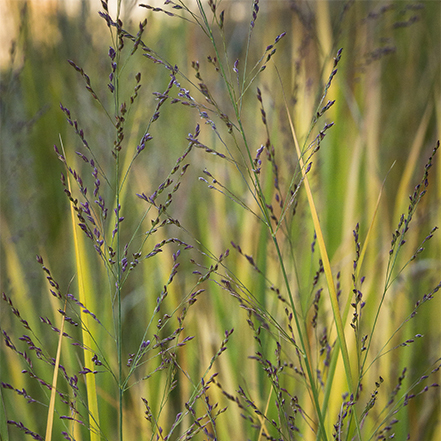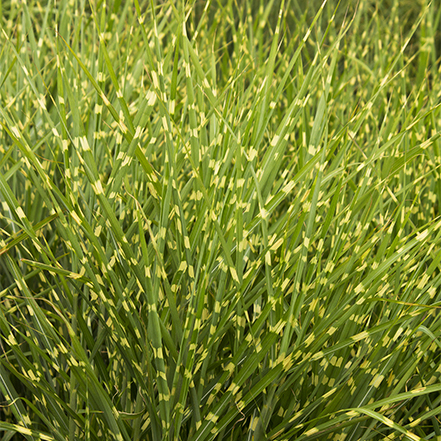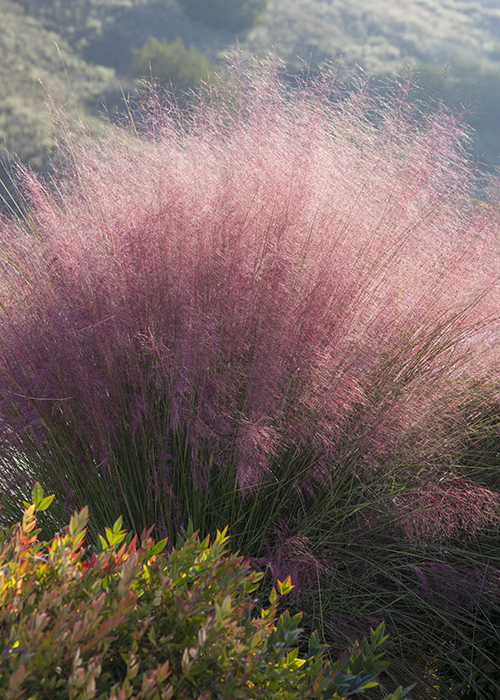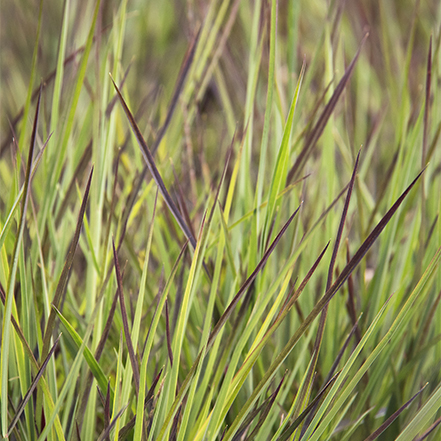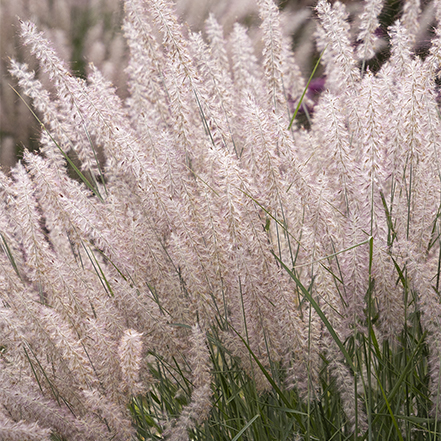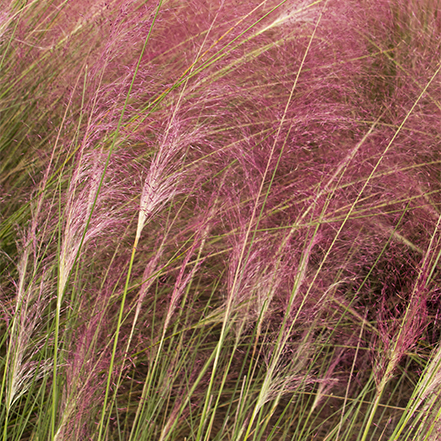Ornamental grasses can add beauty, texture, and interest to any garden or landscape. Whether you want to create a lush backdrop or add a focal point, these versatile plants are a fantastic choice for nearly any garden. Ornamental grasses are usually low maintenance, offering easy year-round color and intrigue to your space.
If you’re looking to add ornamental grasses to your landscape design, here’s everything you need to know.
The Value of Ornamental Grasses in the Garden
Ornamental grasses are integral to beautiful landscape design, thanks to their versatility and wide range of color, size, and texture. You can use ornamental grasses as a privacy screen, as a groundcover, or as an anchor for the eye. And, with so many varieties available, you can find grasses to grow in your climate, whether you need a drought-tolerant species or a wildlife-friendly plant.
(Above) Ginger Love Fountain Grass in the landscape with Russian Sage and Crystal Pink Sedum.
What is an "Ornamental Grass?"
Ornamental grasses comprise diverse varieties from the grass family and include both true grasses and plants with a grass-like appearance, like sedges. They can be categorized as annuals or perennial ornamental grasses, and they commonly stand out due to their height, texture, color, or seasonal interest.
Benefits of Adding Ornamental Grasses to Your Landscape
Adding ornamental grasses to your landscape has many benefits that extend beyond aesthetics. These grasses can support ecological diversity, soil stabilization, and pest resistance. Moreover, they can provide four seasons of interest, making them a valuable addition to your landscape.
Favorite Ornamental Grasses for Every Situation
If you want to add ornamental grasses to your landscape, here are some of our top recommendations.
Best Grasses for Shade
If you're looking for ornamental grasses to grow in shady areas, here are some bright and beautiful options.
Japanese Forest Grass is a wonderful addition to container gardens or to serve as a shaded and colorful border. This perennial can grow in filtered sun or partially shady areas and spreads gently in clumps that create billowing mounds of green and color. All Gold Japanese Forest Grass has slender stems and golden foliage. Golden Japanese Forest Grass features foliage that becomes pink-tinged when the weather cools in autumn.
(Above) Ice Dance Sedge lines a shady pathway.
Sedge offers tons of variety for shadier gardens. These plants can be evergreen and can tolerate various conditions, including filtered sun, full shade, partial shade, and partial sun. Sedge is great to plant en masse for a dramatic effect or as a container specimen for beds and borders.
For a lighter color, try Variegated Japanese Sedge, with lustrous green and creamy white striped blades. Or, for more green, use the Ice Dance Japanese Sedge and EverColorⓇ Everlite Variegated Sedge, both of which include slender foliage with dark green color accented by creamy white. The EverColorⓇ Everest Variegated Sedge is another popular variety that adds a fountain of ribbon-like white-striped green foliage to any shade garden or bed.
Ice Dance
Japanese Sedge
An easy-growing, non-invasive groundcover with slender, bright green leaves and creamy white margins that brighten shady borders. Spreads gently by underground stems (rhizomes) to create a dense mat of foliage. Part shade to part sun. Up to 1' tall, spreading slowly. Zones 5-9.
Golden Japanese
Forest Grass
A graceful, colorful grass for shaded borders and container gardens. Slender stems holding bright yellow leaves with thin green stripes. Foliage becomes pink-tinged as the weather cools. Naturalizes well; clumps spread gently. Partial shade to partial sun. Up to 18" tall and wide. Zones 4-9.
EverColor® Everest
Variegated Sedge
A mounding fountain of ribbon-like white-striped green foliage adds wonderful texture to any dappled sun or shade garden. Forms a neat mound of foliage that arches up from the crown and weeps gracefully. Full shade to partial sun. Up to 15" tall, 24" wide. Zones 5-9.
Best Tall Grasses
As mentioned, ornamental grasses can serve as privacy screens or tall focal points in your landscape. Feather Reed Grass is easy to grow and adds tall, feathery stalks to your space. If you have a garden with full sun, check out the Foerster’s Feather Reed grass with stalks that emerge reddish brown in spring and turn rich gold in the fall. Or, check out Overdam Feather Reed grass that add yellow-margined foliage with red-brown summer plumes that turn gold in the fall. Both grass varieties add a striking vertical effect to your landscape and can give you privacy where you need it.
(Above) Foerster's Feather Reed Grass forms a privacy hedge around a dining table.
If you’re seeking another easy-to-grow, tall grass, Northwind Switch Grass is compact clumping grass with a straight vertical form. Its blue-green foliage turns yellow in autumn, and its sturdy stems stay upright, even in the winter, making this a great grass for songbirds. For sunnier areas, Porcupine Grass works well as a tall plant and includes green foliage highlighted by horizontal golden bands.
Foerster's Feather
Reed Grass
Create a stunning vertical effect with feathery stalks that emerge reddish brown in spring and turn a rich golden color in fall. Blooms two to three weeks earlier than common feather reed grass. This sterile grass thrives in wet soils, yet tolerates drier conditions. Full sun. Up to 2' tall and wide; bloom stalks reach 6' tall. Zones 4-9.
Northwind
Switch Grass
A compact, clumping grass with excellent vertical form. Olive to blue-green foliage turns golden yellow in autumn. Airy flower panicles produce showy seed heads and lend winter interest. Sturdy stems stay upright, even under snow load, giving protection to wintering songbirds. Partial to full sun. Up to 6' tall, 3' wide. Zones 4-9.
Porcupine
Grass
A more upright form that's not as relaxed and vase-shaped as others. Green foliage is highlighted by dramatic horizontal golden bands. Reddish bronze plumes rise above the foliage in summer. Works well for use as a single specimen or in groupings. Full sun. Up to 8' tall, 3' wide. Zones 4-9.
Best Colorful Ornamental Grasses
As mentioned, ornamental grasses can add color and intrigue to your space. If you’re seeking colorful grass, the Shenandoah Switch Grass is one that is prized for its unmatched color. Its green leaves emerge with red tips in spring, darken through summer, and turn a rich burgundy color in the fall.
Or, for a darker color, try the Blue Heaven Little Bluestem that emerges blue, develops pink and burgundy hues in late summer, and turns rich copper in the fall. Its slender stems rice up with purplish panicles for a mystical touch, and this grass is great for bird-friendly landscapes.
(Above) Plumetastic® Pink Muhly Grass is a colorful grass that looks spectacular in the landscape.
If you want a touch of pink in your landscape, Regal MistⓇ Pink Muhly Grass has glossy green foliage complemented with pink-red flowers for extraordinary color. Karley Rose Fountain Grass adds lighter pink to your space with rose-purple flower spikes that glow when backlit by the sun. With so many varieties of colorful ornamental grasses, you’re sure to find something that accents your space with natural wonder.
Blue Heaven
Little Bluestem
Narrow, upright, grassy foliage creates a great vertical accent for a border, rock garden or container. Emerges blue, develops pink and burgundy hues in late summer, and turns a rich copper in fall. Slender stems rise up with purplish panicles. Tan seed heads persist into fall. Up to 4' tall, 3' wide. Zones 3-10.
Karley Rose
Fountain Grass
Graceful, upright, smoky rose-purple flower spikes that nearly glow when backlit by the sun, with a longer bloom season and greater cold tolerance than other varieties. Forms a tufted mound of deep green, arching foliage. Full sun. Up to 4' tall and wide. Zones 5-10.
Regal Mist® Pink
Muhly Grass
Its relatively small form, glossy green foliage, and airy pink-red flowers set this extraordinary selection apart from others. Outstanding as a single specimen or grouped in a native garden. Spectacular when massed in a meadow where plumes can be back-lit by the sun. Partial to full sun. Up to 4' tall, 3' wide. Zones 6-9.
Care and Maintenance for Ornamental Grasses
To help your ornamental grasses grow and thrive, it’s important to select the appropriate species and practice regular maintenance. You can reference the USDA Plant Hardiness Zones to ensure the grass you choose can grow in your region. While these grasses are easy to grow, there is still regular care and maintenance you’ll need to perform for optimal health and growth.
Planting and Watering Techniques for Optimal Growth
When planting ornamental grasses, paying attention to the appropriate sun exposure and watering techniques play a significant role in the long-term health of your plants. Feather reed grass, for example, appreciates ample sunshine and well-drained soil for optimal growth. Variegated Japanese Sedge must be watered deeply and regularly in the first growing season to establish its root system. Once established, you’ll need to maintain evenly moist soil. Reference the care information for the grasses you plant to ensure they receive enough sunlight and moisture and can grow season after season, bringing beauty, texture, and color to your landscape.
Necessary Seasonal Care
Most ornamental grasses require minimal seasonal care. During early spring, it’s recommended to prune back on the previous year’s growth to allow fresh shoots to flourish. This helps remove any dead or damaged foliage.
For some grasses, you’ll need to divide them every few years. As ornamental grasses grow, they can become a bit overcrowded. In the early spring, you can divide your grasses to make room for new growth. In addition, keep an eye out for pests and diseases. While most ornamental grasses are resistant to pests, they can be susceptible to problems like rust and leaf spot. Keep an eye out for these problems so you can treat them if needed.
Incorporating Ornamental Grasses into Your Garden Design
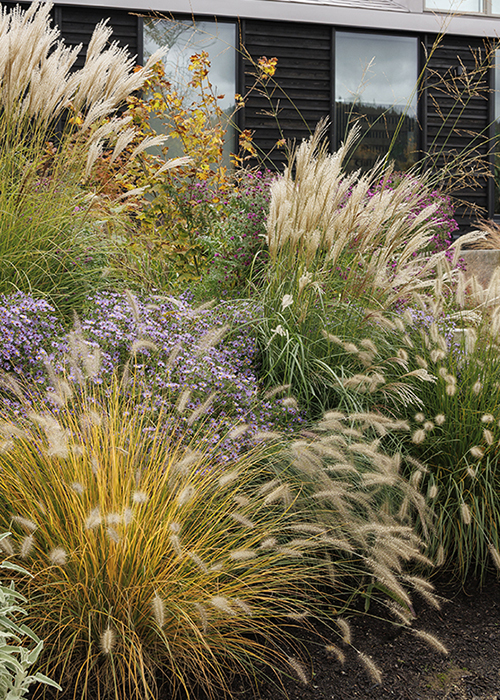
(Above) Design by Wesley Younie
With so many varieties of grasses, there are tons of opportunities to get creative with landscape design. Check out our guide on landscape design with ornamental grasses, which includes ideas for creating privacy screens, groundcover, and more.
Here are some additional tips for incorporating these plants into your landscape:
Planning for Size and Growth
When weaving ornamental grasses into your design, understanding the particular growth habits of each type is vital. For instance, Japanese Forest Grass prefers shade and only grows about 18 inches tall, making it an excellent choice for understory planting.
Comparatively, grasses like Feather Reed Grass can mature in height up to five feet and pair well with similarly tall perennials. Including a mix of grasses with varying sizes and growth habits creates depth and complexity in landscape design.
Ornamental Grasses: Ease and Versatility
Overall, ornamental grasses are champions of versatility and ease. They're adaptable to various soil conditions, require low-to-medium moisture, and are largely maintenance-free. They offer many opportunities to experiment with different color palettes, textures, and landscape designs, adding depth and dynamism to traditional and contemporary spaces.
Whether you're seeking to add a pop of color, a wave of texture, or gentle movement to your garden, embracing the variety and versatility of ornamental grasses could be your answer. With thoughtful planning and creative vision, these grassy wonders can transform outdoor spaces into enchanting natural tapestries.
Frequently Asked Questions
Is there an ornamental grass that is evergreen?
Yes! There are many varieties of ornamental grasses that are evergreen. Sedge is a popular ornamental grassy plant with varieties that stay green year-round.
Should you cut back ornamental grasses in the fall?
If you prefer to keep your ornamental grasses looking trimmed and contained, you can cut back on them in the fall. However, for some varieties, the foliage can help insulate the crown of the plant, and offer food and shelter to birds in the winter, so you may want to wait until early spring to cut back.
Do you need to divide ornamental grass?
You can divide ornamental grass every 2-3 years to help manage its growth. Do this in late winter or early spring before the plant’s growth starts.
Get More Plant Care Tips and Design Help
- Find your local garden center to ask if they carry the featured plants.
- Sign up for the Grow Beautifully newsletter. You'll get first access to exclusive digital design guides and webinar invites. Plus, receive helpful stories like these delivered straight to your inbox.
- Browse stories with lessons from garden design experts
- Brows stories with plant care tips
- 5 Ways to Design with Ornamental Grasses





